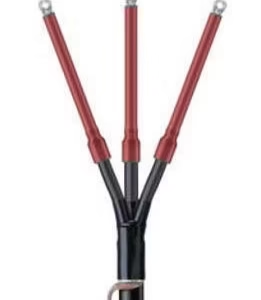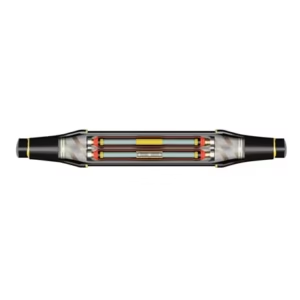Description
Introduction to HT and LT Panel Services
High Tension (HT) and Low Tension (LT) panels are crucial components in the realm of electrical distribution systems. HT panels are designed to operate at high voltages, generally above 1 kV (kilovolt), making them essential for effective power transmission in industrial settings. Conversely, LT panels are utilized for lower voltage applications, typically ranging from 230V to 1 kV. This fundamental distinction in voltage levels sets the stage for their respective roles and applications within electrical systems.
The significance of HT and LT panels extends beyond mere voltage classification; they play pivotal roles in the management and distribution of electrical power across various sectors. HT panels are commonly deployed in generating stations, substations, and large-scale industrial facilities, where there is a necessity to handle substantial amounts of electricity. These panels not only facilitate power distribution over long distances but also ensure the stability and reliability of electrical supply, minimizing losses during transmission.
On the other hand, LT panels cater to the needs of commercial applications and smaller industrial setups. They are instrumental in distributing power to various end-users within a localized environment. Equipped with circuit breakers and fuses, LT panels enhance safety by protecting electrical circuits from overloads and short circuits. They serve as the first line of defense in electric systems, ensuring that power is evenly distributed to different operational areas, which is crucial for the efficient functioning of equipment and machinery.
In conclusion, understanding the foundational concepts surrounding HT and LT panels is imperative for anyone involved in electrical engineering or facilities management. These panels not only differ in voltage levels but also in their applications and significance within electrical systems. By grasping their roles, professionals can make informed decisions regarding power distribution and management in various settings.
Key Features of HT and LT Panel Services
High Tension (HT) and Low Tension (LT) panel services are essential components in electrical distribution systems, serving distinct functions based on the electrical voltage and load requirements. Understanding the key features of these panels is crucial for optimizing performance and ensuring safety.
HT panels typically manage voltages exceeding 11 kV and are equipped with several critical components, including circuit breakers and transformers, designed to handle high voltage loads efficiently. Circuit breakers in HT panels fundamentally act as safety devices, automatically interrupting the circuit in case of overload or short circuit conditions. The transformers present in these panels are responsible for stepping down the voltage for safe distribution to various loads.
Conversely, LT panels operate at lower voltage levels, usually up to 1 kV. They are commonly used for commercial and residential applications, managing lower loads but requiring similar safety features, such as circuit breakers to prevent electrical faults. Additionally, LT panels are equipped with distribution boards that manage various electrical circuits, ensuring the controlled distribution of electricity across different areas.
The operational aspects of both HT and LT panels include varying load capacities designed to match the specific requirements of their applications. HT panels cater to industrial facilities, large commercial buildings, or substations, while LT panels are more suited for smaller facilities and residential buildings.
Maintaining these panels is vital for their longevity and efficient performance. Regular servicing ensures that Circuit Breakers, Transformers, and safety systems function properly, preventing potential failures or hazards. Thus, proper maintenance contributes to the overall reliability and safety of electrical systems. This highlights the importance of selecting a reputable service provider for HT and LT panel services to ensure comprehensive evaluation and upkeep.
Applications of HT and LT Panels….
High Tension (HT) and Low Tension (LT) panels serve crucial roles across various sectors, accommodating a range of electrical distribution requirements. The differing voltage capacities of these panels dictate their specific applications, which span industrial, commercial, and residential settings.
HT panels are primarily utilized in high-load industrial processes. These panels support operations in industries that require substantial power, such as manufacturing plants, power generation facilities, and heavy machinery industries. The robust design of HT panels allows them to manage large electrical loads efficiently, ensuring that machinery operates optimally. For instance, in a steel manufacturing plant, HT panels are employed to distribute electricity to electric furnaces and other equipment, ensuring a steady power supply that meets the high demands of the process.
Conversely, LT panels are essential for commercial buildings and low voltage setups. These panels are typically used in office complexes, retail spaces, and residential areas. The primary role of LT panels is to distribute electricity to various loads, such as lighting systems, HVAC systems, and small appliances. A practical example can be seen in an office building, where LT panels are used to ensure that different departments receive adequate power without overloading the system. Moreover, LT panels facilitate the integration of modern technologies, such as smart lighting and energy-efficient appliances, which further enhances energy management.
Additionally, both HT and LT panels improve safety in electrical distribution. They are designed with protective devices that guard against overloads and short circuits. This attribute is particularly valuable in high-stakes environments like hospitals, where uninterrupted power supply is critical for life-support equipment, making the reliable operation of both HT and LT panels paramount.
Choosing the Right for Your Needs
Selecting the appropriate HT (High Tension) and LT (Low Tension) panel services is a critical step for any organization seeking to ensure operational efficiency and safety. The first aspect to consider is the load demands of your specific application. Understanding the power requirements, such as voltage and current levels, allows for a proper assessment of the type of panel service needed. High tension services typically cater to heavy power loads and are best suited for industrial applications, while low tension panels are often adequate for commercial setups with lower electricity needs.
Another vital factor to assess is space constraints. The physical footprint of the panels and their ancillary equipment can significantly influence the choice of panel services. If space is limited, compact and modular panel designs should be prioritized, which can still deliver optimal functionality without sacrificing performance. Additionally, consider how the panel positioning will affect maintenance and accessibility. Efficient access to these systems is essential for regular inspections and updates.
Budget considerations also play a significant role in decision-making. Understanding the initial setup costs and ongoing maintenance expenses is essential to avoid overspending. It’s advisable to adopt a cost-benefit perspective, weighing the quality and longevity of the services against their price. This will help in choosing a solution that is financially sustainable in the long term.
Lastly, ensuring compliance with regulatory standards is non-negotiable. Researching applicable regulations and ensuring that prospective service providers meet these stipulations is crucial for adhering to safety and operational protocols. Evaluate service providers based on their credentials, expertise, and reputation within the industry. Engaging with providers who have a track record of reliability can lead to a more aligned solution with operational demands and safety standards.
Future Trends in HT and LT Panel Services
The landscape of high tension (HT) and low tension (LT) panel services is rapidly evolving, driven by advancements in technology and an increasing emphasis on sustainability. One significant trend reshaping the industry is the development of smart panels, which incorporate digital monitoring and control systems. These smart panels enable real-time data analysis, allowing for improved operational efficiency and enhanced fault detection. As a result, maintenance can be conducted more proactively, minimizing downtime and reducing potential losses associated with power outages.
Automation also plays a crucial role in the future of HT and LT panel services. With the rise of the Internet of Things (IoT), integrating automated features within electrical panels can facilitate remote monitoring and management. Operators can track energy consumption patterns and load distribution more effectively, making it easier to optimize performance. Automated systems will encourage adjustments in real time, thus contributing to both operational efficiency and safety in power management.
Another pivotal consideration is the growing emphasis on energy efficiency. As concerns over climate change become more pressing, the design and operation of HT and LT panels are increasingly incorporating energy-efficient practices. This shift is not only essential for compliance with evolving regulations but also beneficial for organizations looking to reduce operational costs. Moreover, renewable energy sources are having a profound impact on HT and LT panel systems. The integration of solar, wind, and other renewable energy technologies into the grid necessitates the adaptation of existing infrastructure to accommodate new energy flows, which presents both challenges and opportunities for the industry.
By remaining attuned to these trends—embracing smart technologies, automation, and sustainable practices—businesses can position themselves favorably in the future landscape of electrical systems. The ongoing commitment to innovation will ultimately determine the effectiveness and reliability of HT and LT panel services in meeting the demands of a more interconnected and energy-conscious world.









Leo (verified owner) –
Very well worth the money.
Aiden (verified owner) –
Very fast delivery.
David (verified owner) –
Good quality.
Nicholas (verified owner) –
Good quality.
Lucas (verified owner) –
Very well worth the money.
Ryder (verified owner) –
Very well worth the money.
Angel (verified owner) –
Very fast delivery.
Anthony (verified owner) –
Very well worth the money.